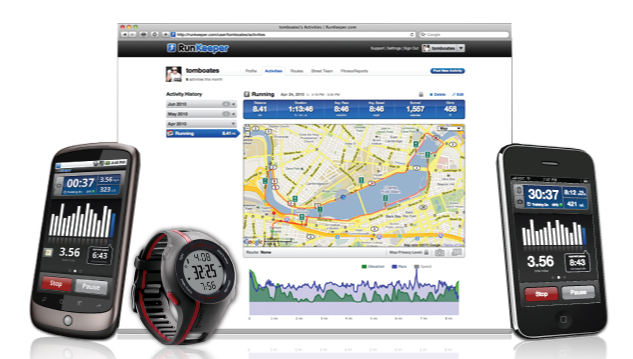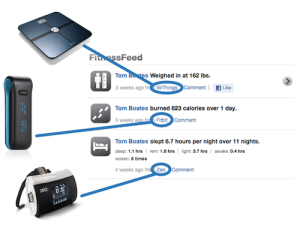 You may have heard about the social graph and the interest graph, but what about the health graph? Thanks to RunKeeper, this term may soon become an oft-used part of your vocabulary. RunKeeper, for those unfamiliar, was founded three years ago as a simple iPhone app and a small online fitness community designed to help runners and other fitness enthusiasts employ smartphone technology to better track, measure, and improve their fitness. Since then, RunKeeper has expanded across mobile platforms, growing into a community of 6 million strong.
You may have heard about the social graph and the interest graph, but what about the health graph? Thanks to RunKeeper, this term may soon become an oft-used part of your vocabulary. RunKeeper, for those unfamiliar, was founded three years ago as a simple iPhone app and a small online fitness community designed to help runners and other fitness enthusiasts employ smartphone technology to better track, measure, and improve their fitness. Since then, RunKeeper has expanded across mobile platforms, growing into a community of 6 million strong.
Over the years, the startup has integrated with various gadgets and accessories, like a WiFi body scale tracker, sleep monitoring devices, and heart rate transmitters — all as part of an effort to give people a unified resource to aggregate the various health and fitness services, devices, and apps they use on a daily basis — before blasting this information out to friends, family, and competitors over various social channels.
All the while, the startup has quietly been building a “correlation engine”, because simply aggregating fitness and health data from a few devices wasn’t enough — RunKeeper users had been clamoring for a way to make sense of all the data integration from third parties. And so, the “HealthGraph” was born to do just that. But what is this “HealthGraph”, exactly? RunKeeper CEO Jason Jacobs wants you to “imagine a system that can identify correlations between a user’s eating habits, workout schedule, social interactions and more”, that has the sole purpose of delivering an “ecosystem of health and fitness apps, websites, and sensor devices that really work, based on a user’s own historical health and fitness data”.
But what’s a good health graph without an open API, am I right? Two weeks ago, RunKeeper announced that it was opening up its health graph to third party developers, so that these outside parties can tap into users’ FitnessFeeds, which are basically akin to Facebook wall feeds, to build cool clients and apps, a la Facebook and Twitter clients.
FourSquare, Zeo, Withings, Polar, Wahoo, and BodyMedia were among the early partners looking to take advantage of the new, open RunKeeper health graph, and this week RunKeeper has announced three additional partners: Swimsense, an advanced monitor that allows swimmers to track performance information, distance data, etc., Earndit, which lets users earn points and collect trophies during workouts that can be redeemed for rewards, and Runstar, an Android app that enables users to track their running progress and share results with friends.
While it may seem counterintuitive for RunKeeper to be partnering with sites like Runstar, which ostensibly offers a competitive service, Jacobs said that the ultimate goal of building a robust and open framework for the fitness community is more important than nominal competition.
Though RunKeeper has raised $1.5 million to date, Jacobs recently told Wired that the company hasn’t touched any of that money, focusing squarely on scaling. And scaling they have, as RunKeeper has more than doubled its user base since November.
 And though the app was originally selling for $10 on the app store, and selling quite well, Jacobs and team have declared that the RunKeeper app will be permanently free.
And though the app was originally selling for $10 on the app store, and selling quite well, Jacobs and team have declared that the RunKeeper app will be permanently free.
Now, I may not be the fittest guy on the block — I prefer to get my heart rate up by thinking about when the next big IPO is coming and by consuming large quantities of coffee — but that doesn’t mean I can’t appreciate a good fitness idea when I see one. The ambitiousness of RunKeeper’s open Health graph and API, along with a free app, fitness feeds, and the ability to compare metrics in FitnessReports, share achievements with friends — and the fact that any time one uses an integrated device or app, the corresponding data posts both on the third party’s site and RunKeeper’s feeds — all makes for one terrific service.
And, what’s more, with Google Health recently closing its doors, RunKeeper has one less Goliath to worry about during its quest to aggregate the world’s health information.
Developers that would like to learn more about the HealthGraph API should check out the landing page here.